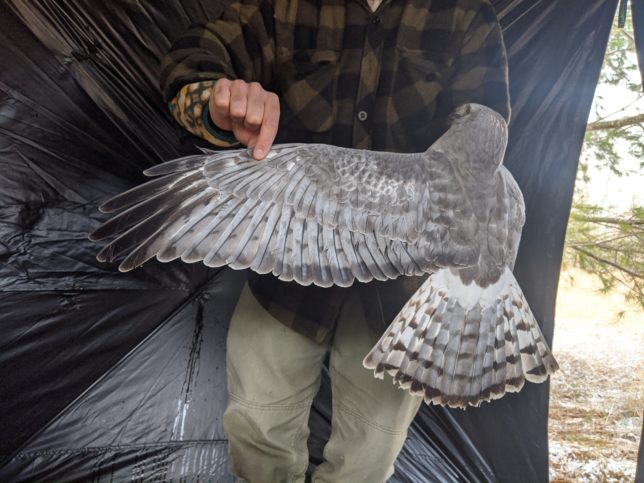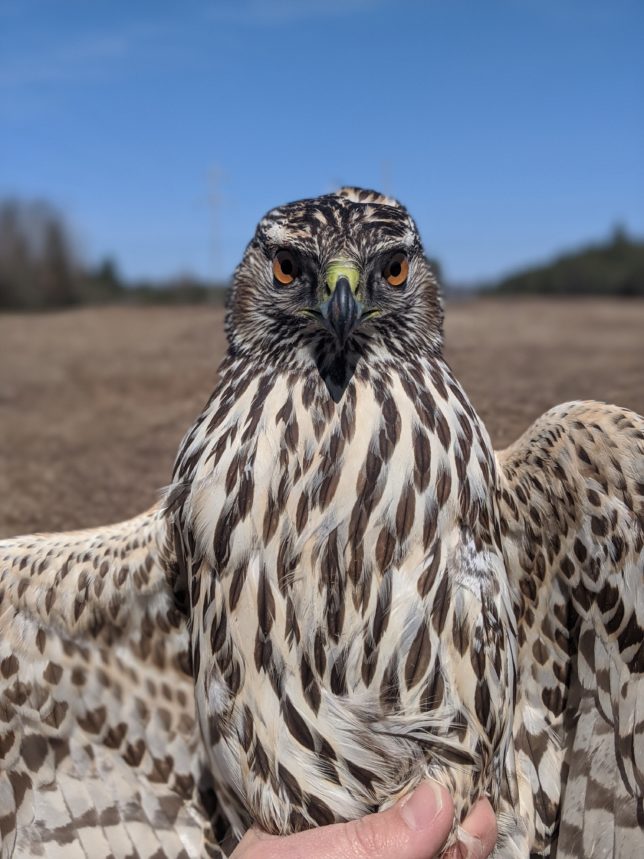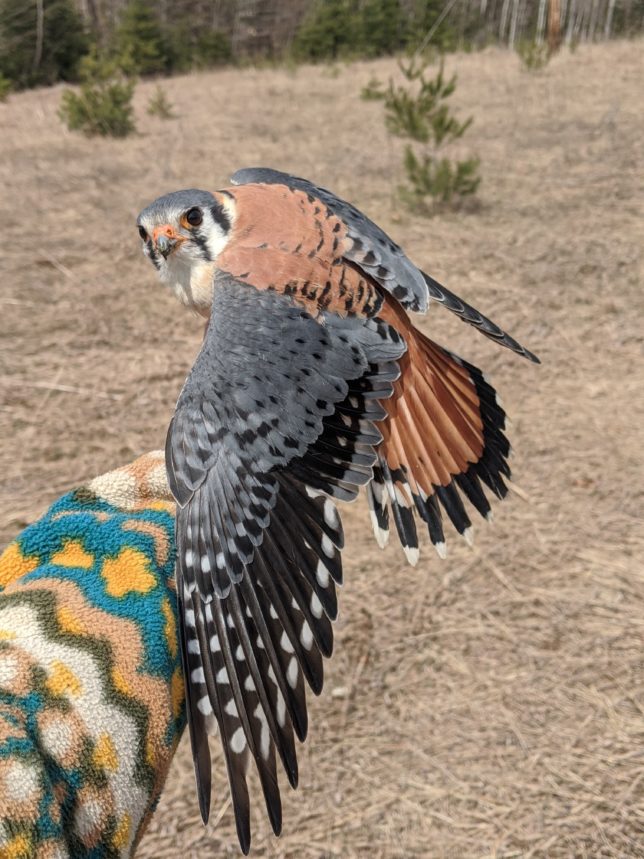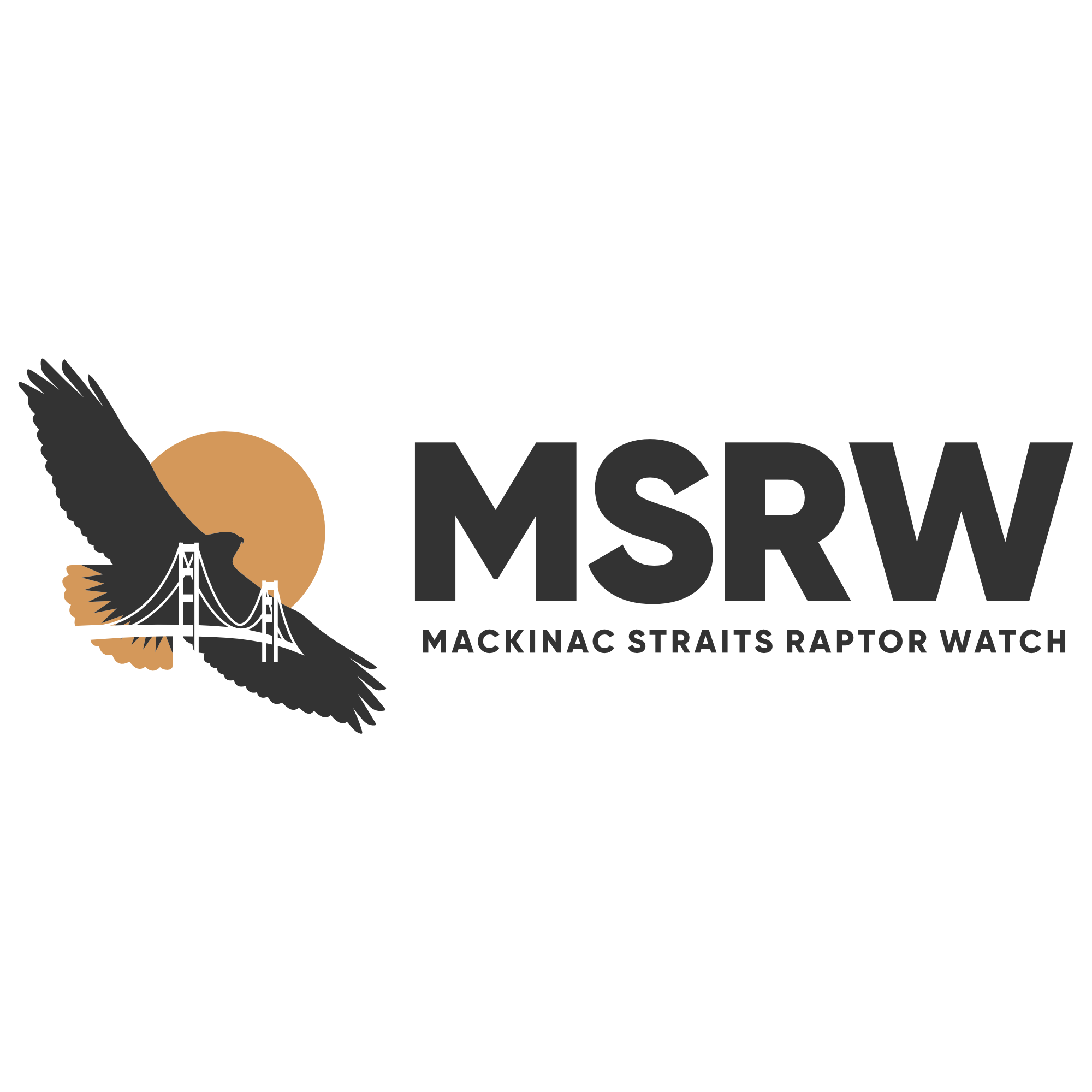
Adult male Northern Harrier. Notice the striking gray plumage and characteristic white rump which is a good field mark for this species.
Since I last left you, fine folks, we stood at 40 birds of 7 species captured for the inaugural spring 2020 raptor banding season. Since then, we have added 15 new birds, including some fresh captures and some first of the season species. This past week has been quite good despite battling the onslaught of adverse weather, which has seemed for the moment to have broken up migration, therefore not allowing a good flight to develop over this past week. Now at this point in the quarantine, I’m sure it feels like being in the film “Groundhog Day”. What I mean by that, for those of you have not seen this film is that we all seem to be in an even more boring and repetitive routine then what we are used to in our normal everyday life. However, I am truly grateful that I am able to keep working and doing what I love! For if I wasn’t banding my days would consist of me moving from my bed to the couch, and then back again at night! Therefore, the fact that I’m able to trap and share all the exciting news of what’s going on with MSRW with you is awesome. Hopefully, this will give you something new and different to read about while also potentially learning something new. Now let’s dive into a recap from the past week.
April 11th was a beautiful day but was quite slow on the trapping side. That being said, we managed to catch 3 birds of 3 species. This included 1 Sharp-shinned hawk (SSHA), 1 Merlin (MERL), and a first of the season Northern Goshawk (NOGO). Now the goshawk is the largest of the three accipiter species found in North America and is a very aggressive predator. It is always exciting to catch these forest-dwelling birds, as I myself was first introduced to them this past fall in Idaho. The goshawk we caught here was a second-year male, meaning it hatched in the summer of 2019. One thing that was cool about this bird is that its eye was orange. Now you may be wondering why is that? Well, with many raptor species looking at eye color can be one of a few criteria we can use when trying to determine a hawks age. As hawks age, their eye will change color. This is, of course, variable among different species and goshawks develop a red eye once they become an adult. When a goshawk hatches, its eye is usually a yellow or a pale gray. Then it transitions to orange in its second year of life. This was awesome to document as I have only seen goshawks that were a few months of age and had the typical yellow eye. This guy was on his way to becoming an adult!

Second year, Male Northern Goshawk. Note orange eyes that will transition to a blood red once it is an adult.
After this, we lost a few days and were not able to trap again until the 14th. This day was also not great for the weather as I sat in the blind and battled off and on snow squalls for many hours. It should also be noted that I didn’t dress appropriately and was freezing my butt off! But being a trapper requires patience and toughness and, I was not going to give up. I was rewarded with what was maybe the best bird we will catch all season. An adult male Northern Harrier (NOHA) also known as a “gray ghost”. They are called this for their plumage, which is a stunning gray and white. In my opinion, they may be one of the most gorgeous birds in all of North America, with the attached picture, you can be the judge. In the raptor banding world, catching harriers is not only quite uncommon but also tough. These birds are aerial acrobats and have amazing eyesight and are able to see many traps/nets and thus can easily avoid being caught. This harrier seemed to be enjoying these snow flurries because as soon as one flurry stopped there, it was flying gracefully in the open looking for prey. Lucky for me it, liked what I had on the menu, a tasty European starling. No bird was harmed in the capture of the harrier, by the way. Also, this will probably be the last gray ghost I ever handle, and it was something I will not forget.
Over the next few days, which included the 15th,16th, 17th, and 18th, we managed 12 birds. On the 17th, we were skunked and captured a whopping zero raptors. Over this stretch, we got a good diversity of species, which included another merlin and juvenile red-shouldered hawk, along with a smattering of sharp-shins and another red-tail. Today, we got another first of the season species, an American Kestrel (AMKE), despite having to close early due to strong winds. This is North Americas smallest falcon but also most colorful. The males have striking blue wings and orange back and tail. On the contrary, the females have barred orange and black wings, back and tail. These birds are usually associated with open grassland and agricultural habitat. You will often seem them perched on telephone wires patiently scanning for rodents in the ditches. They are also cavity nesters and will nest in man-made nest boxes, so if you are looking for a new hobby during this time or simply want to help a species that is in decline, I have included a link in this blog that will provide you all the information you need, should you be interested. https://www.birdwatching-bliss.com/american-kestrel-nest-box.html

First American Kestrel of 2020. Note blue wings and orange back of a male.
With that, I hope you all stay healthy and safe and I will provide you all with another update soon. Until then, as always, stay classy!
Nick Alioto
Spring 2020 Raptor Trapping Totals:
2 NOHA (Northern Harrier)
3 MERL (Merlin)
1 AMKE (American Kestrel)
1 NOGO (Northern Goshawk)
1 COHA (Cooper’s Hawk)
19 SSHA (Sharp-shinned Hawk)
26 RTHA (Red-Tailed Hawk)
2 RSHA (Red-shouldered Hawk)
1 RLHA (Rough-Legged Hawk)
Total Birds: 56

